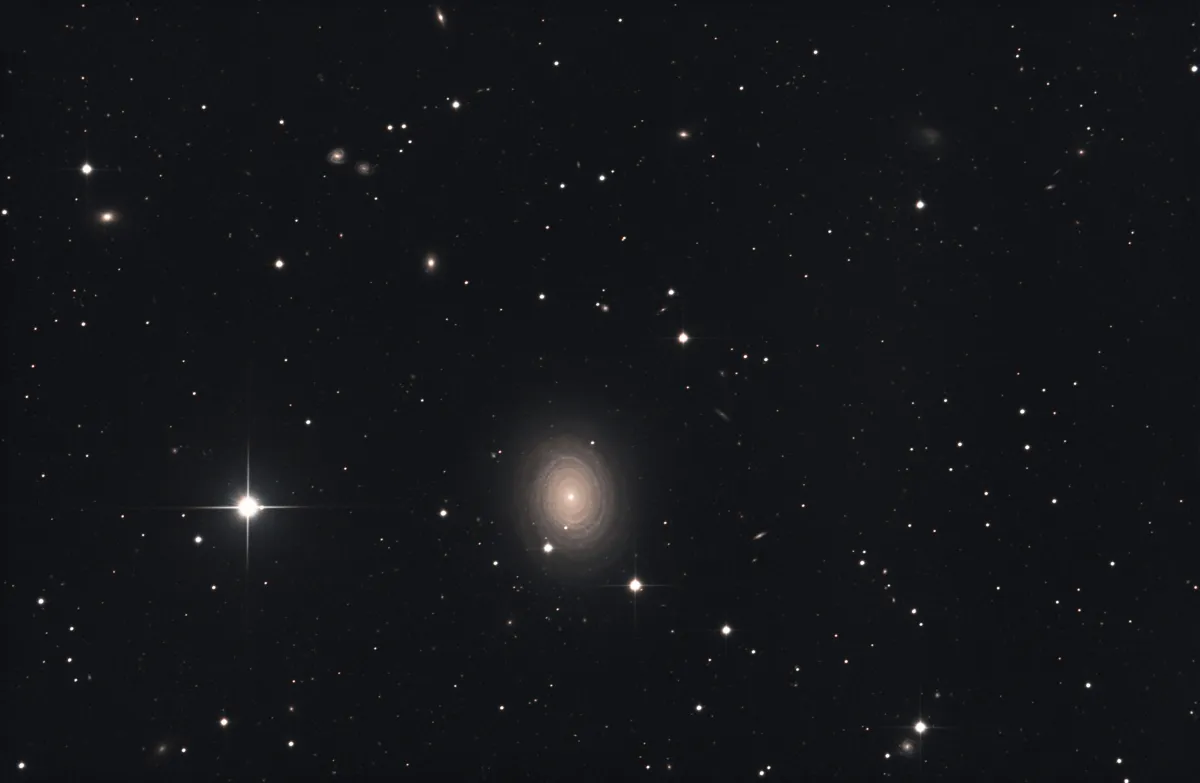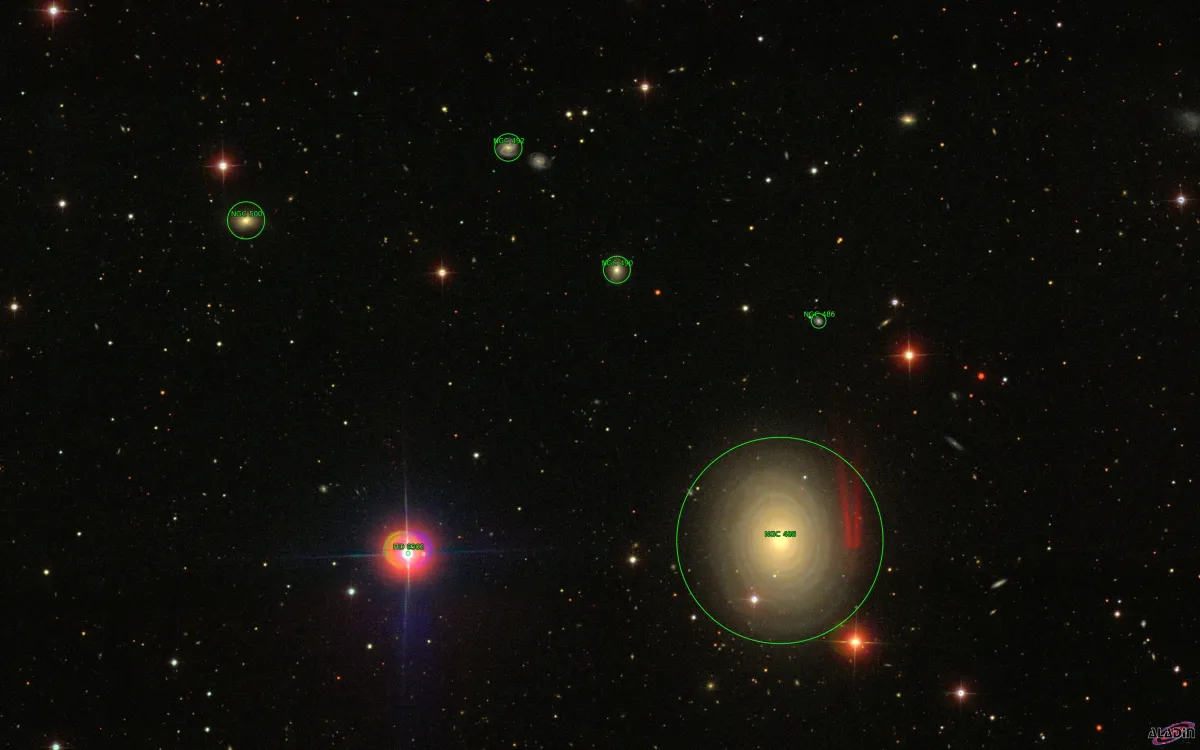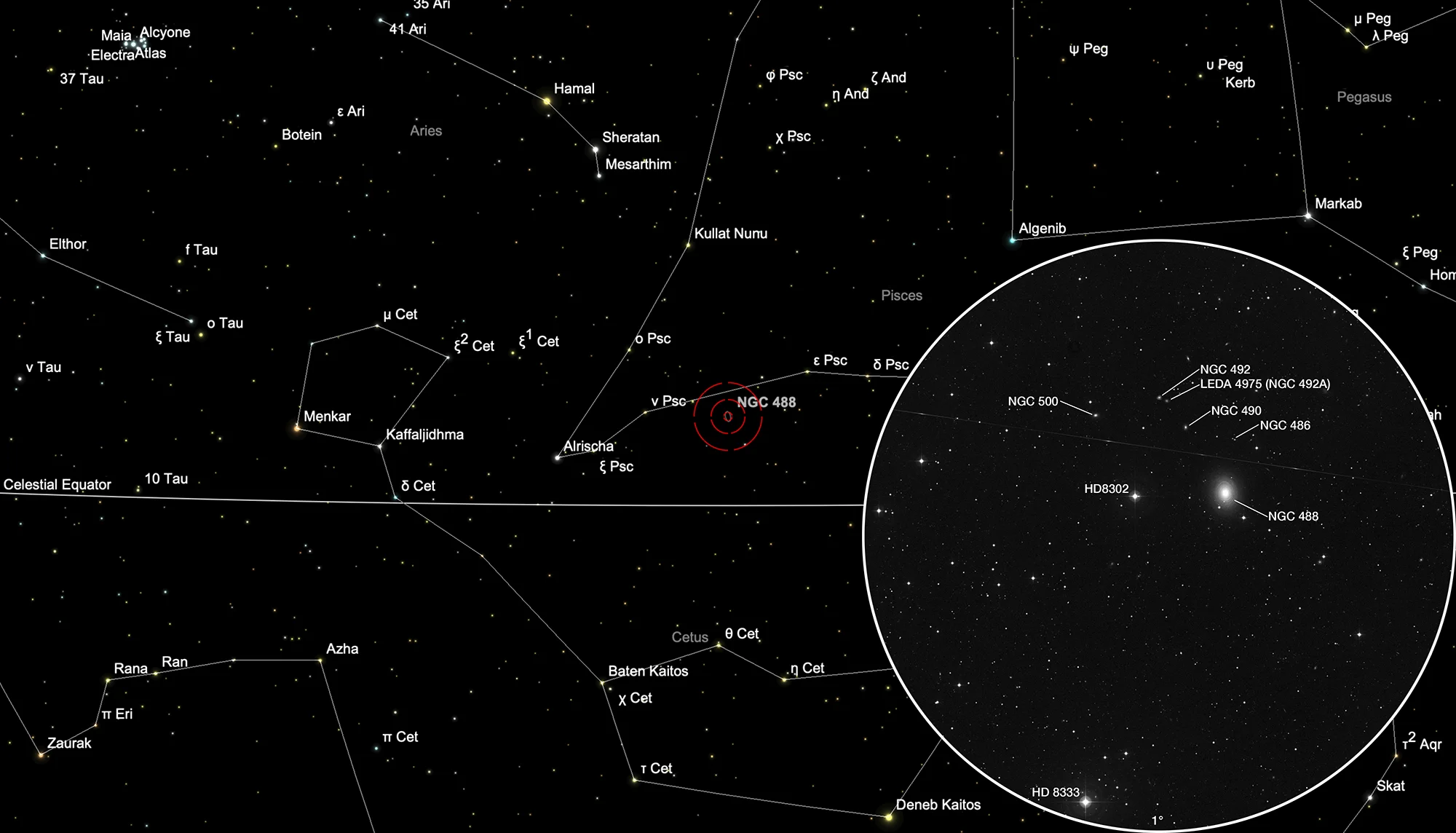Galaxy NGC 488

History
The galaxy NGC 488 was discovered on 13 December 1784 by the German-British astronomer William Herschel with his self-made 18.7 inch f/12.8 reflector telescope in Slough, England. He logged it as III 252 and noted: «Very faint, pretty large, irregurarly round, little brighter in the middle.» [463]
On 6 December 1850, the engineer Bindon Stoney roamed the 72 inch reflector telescope at Birr Castle, Ireland «Leviathan» of his employer William Parsons, the 3rd Earl of Rosse this region of the starry sky and came across the small galaxies NGC 486, NGC 490, NGC 492 and NGC 500. [196, 277]
Notes about misidentifications for NGC 486: The field around bigger galaxy NGC 488 was observed on four nights at Birr Castle, but this object was mentioned only twice as suspected. The position from from the 22 October 1876 observation is 339 arcseconds north (position angle 353°) of NGC 488. This corresponds with an extremely faint galaxy (LEDA 1281966) along with a faint star. NGC 486 is often misidentified with the litthe brighter galaxy LEDA 4975, close southwest of NGC 492. [364]

Physical Properties
NGC 488 is a regular spiral galaxy of morphological type Sb. Spectrographic observations have shown that it has a chemically decoupled nucleus. Stellar population in the nucleus is twice richer in metals that of the central bulge. This could be the result of accretions of stars or gas from outside. NGC 488 is surrounded by a swarm of dwarf satellites. It could have devoured such a dwarf galaxy. [272] The galaxy NGC 488 shows a redshift of z ≈ 0.0075, which corresponds to a distance of about 29.3 Mpc to 30.5 Mpc. [145]
NGC 490 shows a similar redshift of z ≈ 0.0074. NGC 486, NGC 492 and NGC 500 show a much higher redshift of z ≈ 0.04, which suggests a much greater distance. [145]
| Name | RA | Dec | Type | bMag | vMag | B-V | SB | Dim | PA | z | D(z) | MD | Dreyer Description | Identification, Remarks |
|---|---|---|---|---|---|---|---|---|---|---|---|---|---|---|
| NGC 486 | 01 21 43.0 | +05 20 47 | Gx (E0) | 16.0 | 15.0 | 1.0 | 11.6 | 0.2 × 0.2 | 0.047533 | 200.8 | eF, eS, stell, 5' n of h 103 | GC 275; Gxy + star | ||
| NGC 488 | 01 21 46.6 | +05 15 21 | Gx (Sb) | 11.2 | 10.3 | 0.9 | 13.4 | 5.4 × 3.9 | 15 | 0.007579 | 32.01 | 29.300 | pB, L, R, svmbM, * 8 f 10' | WH III 252; h 103; GC 276; UGC 907; MCG 1-4-33; CGCG 411-33; IRAS 01191+0459 |
| NGC 490 | 01 22 02.8 | +05 22 04 | Gx (S) | 15.2 | 14.4 | 0.8 | 13.3 | 0.7 × 0.6 | 9 | 0.007422 | 31.35 | vF, vS, R, 8' nf h 103 | GC 277; MCG 1-4-35; CGCG 411-35; NPM1G +05.0055 | |
| NGC 492 | 01 22 13.5 | +05 25 01 | Gx (SB?) | 16.4 | 15.6 | 0.8 | 14.5 | 0.7 × 0.6 | 120 | 0.047449 | 200.4 | eF, vS, R | GC 280; MCG 1-4-38; CGCG 411-36 | |
| NGC 500 | 01 22 39.3 | +05 23 16 | Gx (E-S0) | 15.2 | 14.2 | 1.0 | 13.5 | 0.8 × 0.6 | 102 | 0.041072 | 173.4 | vF, vS, mbM, * 11 nf 1' | GC 290; MCG 1-4-40; CGCG 411-39; NPM1G +05.0056 |
Finder Chart
The galaxy is located in the constellation Pisces. The best time to observe is June to March, when it is highest at night.
